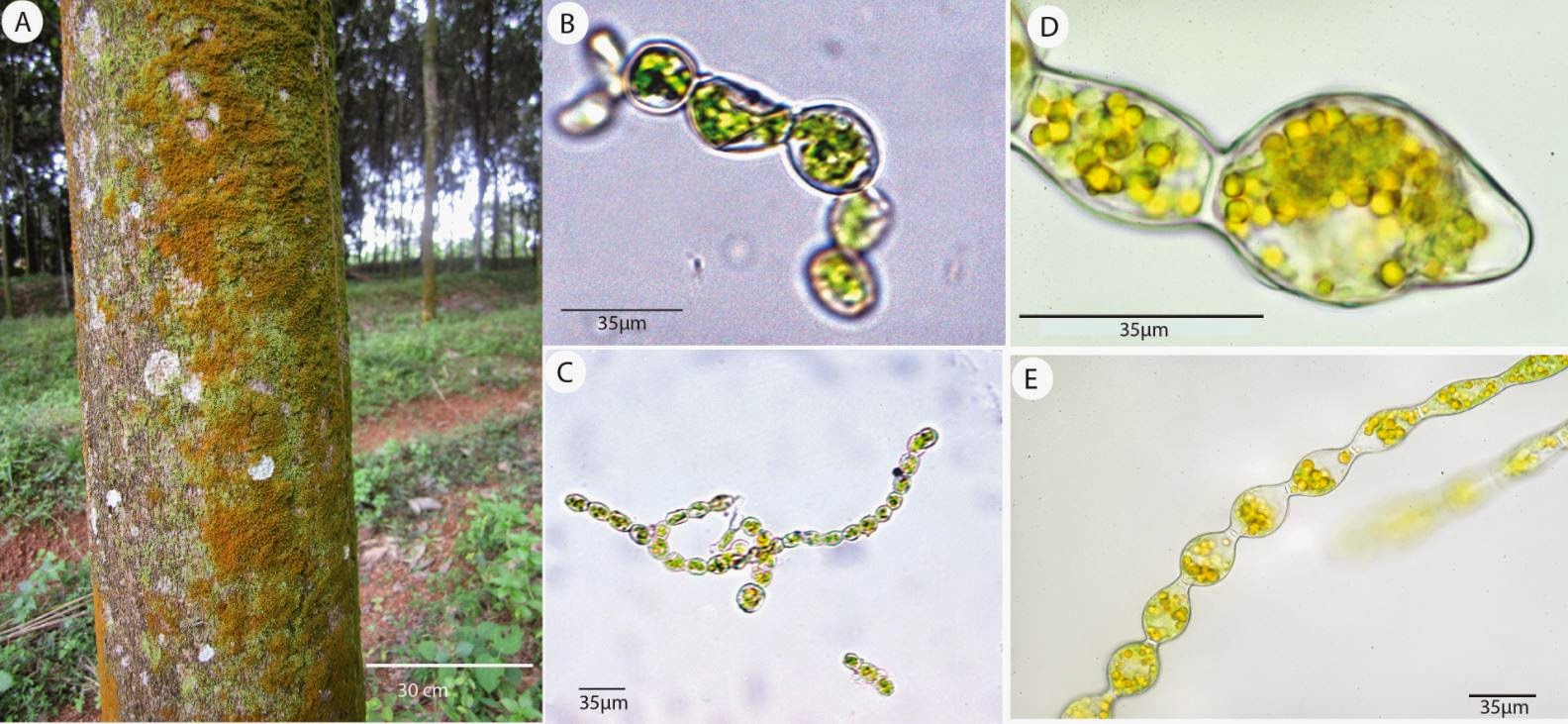Scientists discover European microbe behind “blood rain”
A group of scientists from India and Austria have discovered that the red colored “blood” rain phenomenon sporadically happened at various locations across South India and Sri Lanka was due to the spores of terrestrial microscopic green alga, Trentepohlia annulata. Spells of weird red colored rain –the so-called “blood rain”- across South India had been reported since 1896; the latest one happened in Kerala during December, 2013. Rain droplets were so red that the sun-dried white laundry turns dark-red after drenching in the rain. Since then a number of purported causes for this mysterious phenomenon have been circulating, including divine spell and alien involvement. For example, an American newspaper The Huffington Post reported in 2012 that this was caused by extraterrestrial life (aliens). The present study compared microscopic morphology and DNA sequence data of locally abundant microalgae of the area where the red rain phenomenon happened and confirmed that it was a European species of green microalgae, T. annulata- that was reported previously only from Austria-a Central European country. The study sought a scientific explanation for this seemingly extraordinary phenomenon and confirmed that the blood rain is nothing but a mechanism employed by this alga to disperse its spores (similar to plant seeds) to a very large area at once, so that algae can quickly colonize a large area. The study revealed that DNA sequence of this species from Kerala and that from Austria had very little differences -that in turn suggest that the alga got introduced from Europe not very long ago. “The research confirmed the likelihood that the introduction happened through clouds over ocean- a phenomenon of intercontinental species dispersal previously reported for bacteria and fungi, but first time for alga” said the lead author, Dr. Felix Bast who works at the Central University of Punjab. Clouds over ocean dispersal is analogous to the intercontinental flights that we take; spores of this alga from Europe gets transported to India via clouds that drift across the Arabian Sea. He added that this microalga is absolutely harmless, and the “blood” rainwater is perfectly potable (suitable for human consumption) even for vegetarians. The present study resulted in an international collaborative effort involving researchers from India and Austria, supported in part by INSPIRE Faculty Award from Department of Science and Technology, and published in the journal “Phylogenetics and Evolutionary Biology.” On a related note, this is the first report of the molecular assessment of terrestrial algae from India, thereby highlighting dire necessity to catalogue the biodiversity of this important plant lineage.


Comments